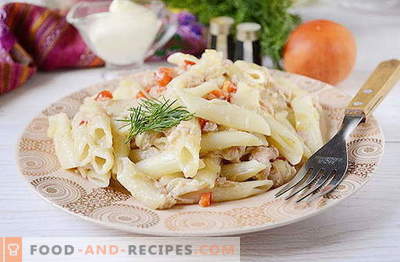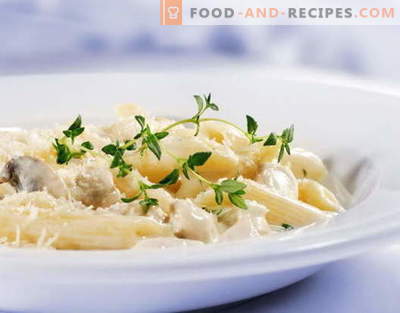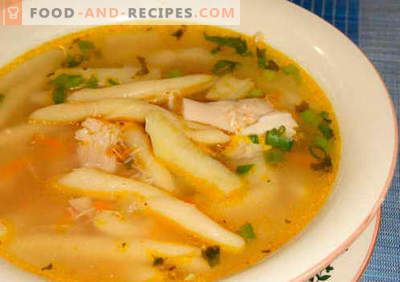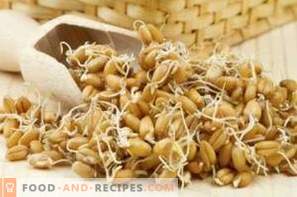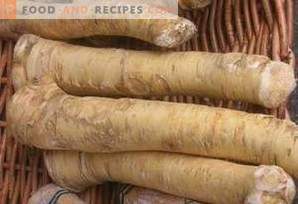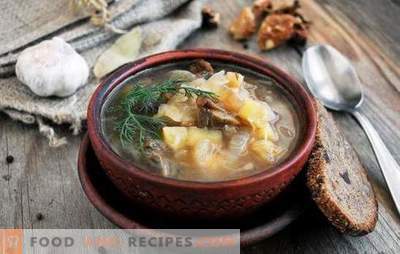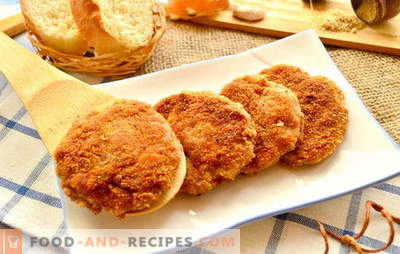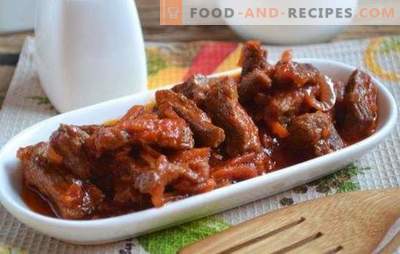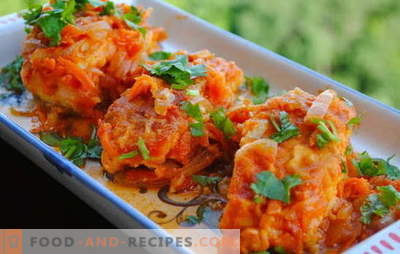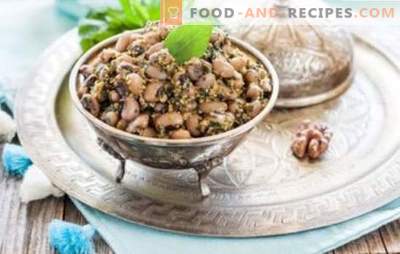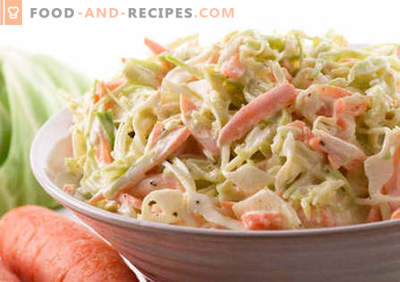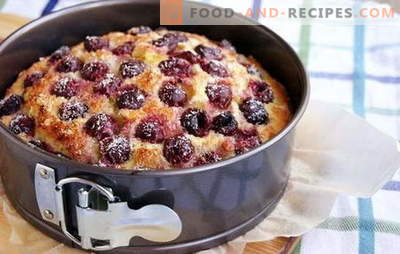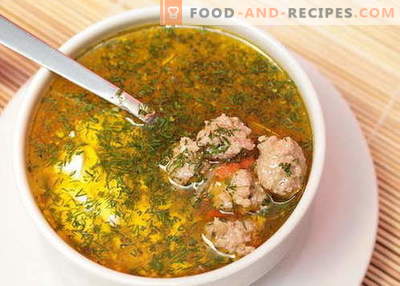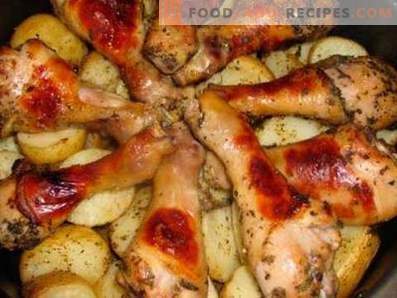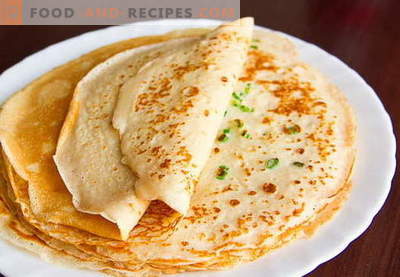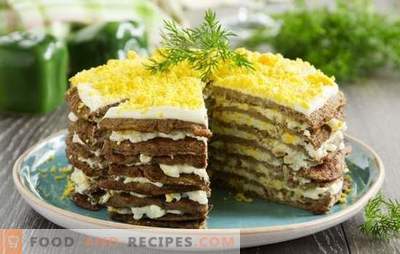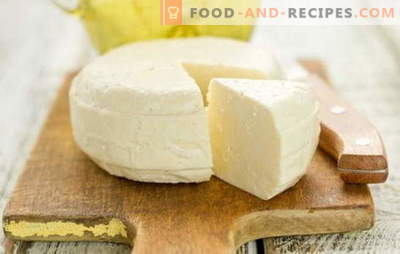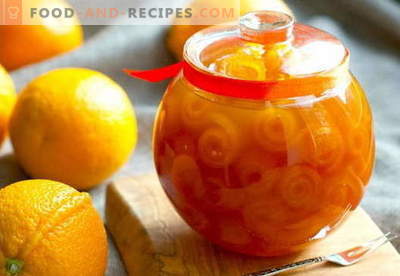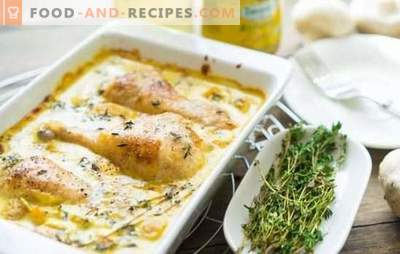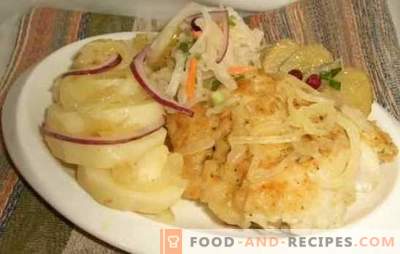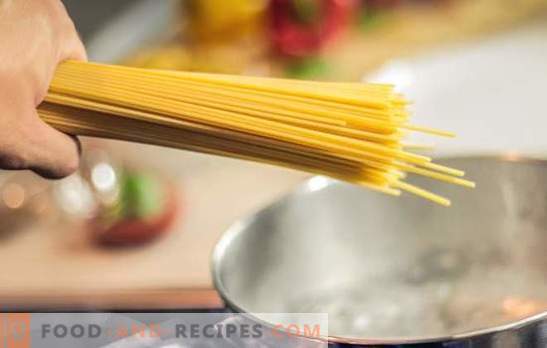
Pasta, spaghetti, they are pasta, are the most favorite dish along with potatoes. In addition, the products practically do not require any preparation, cleaning, washing. It's simple - he opened the bag, fell asleep in the pan and voila, in 10-15 minutes everything will be ready. But is it really so? Even ordinary pasta requires a special approach. There are some mistakes that can even be called crimes against your favorite product.
Are all the pasta the same?
That's not it. The difference is not only in price, shape or size. Advanced housewives know that the products are prepared from a variety of types of flour. As a basis, not only wheat is used, sometimes several species are mixed.
How are the compositions different?
- the presence or absence of eggs;
- dyes;
- improvers.
By the way, not all of these additives are indicated on the packaging. It is necessary to familiarize yourself with the recommendations of the manufacturer. Gone are the days when pasta was sold by weight without providing any information. Boil less than the specified time can, pasta comes to readiness in the sauce, more - it is impossible.
First offense: cook all the pasta and spaghetti equally in time.
Bows, spaghetti, horns or turntables?
One important point to be remembered: corrugated pasta is always better than smooth counterparts. This surface does not allow the sauce to flow to the bottom of the plate, it lingers on the products, soaks them, which greatly improves the taste. In addition to the surface with the purchase you need to pay attention to the form. It should be chosen in view of the dish to be cooked.
What form of pasta to choose:
- Spaghetti, pasta, noodles. They are perfectly combined with creamy and thick tomato sauces. Liquid gravy from them instantly drain.
- Short and hollow products (horns, feathers) are ideally combined with goulash and other sauces, in which there are pieces of meat, fish, mushrooms, bacon.
- Figured macaroni (bows, wheels, spirals) is very well impregnated with sauces, even liquid gravy can be served with them.
Second crime: choose the wrong shape for the dishes.
Chose the pot?
Much depends on the pot. Since the proper cooking of spaghetti and pasta involves the use of large amounts of water (see below), it is not worth taking small dishes. In addition, not every large pot fit. Pans with high sides are not suitable. Pasta should not be a high layer when cooking. Therefore it is worth taking the widest saucepan and with low sides to touch the bottom with stirring. Otherwise, the products may stick to it.
The third crime: cooking pasta in a small or narrow saucepan.
Water poured?
Pasta is always boiled in water. You can replace it with broth, mushroom broth or add them to taste. But it is important that there be a lot of liquid. Per 100 g of dry products, regardless of the type and form, uses a whole liter. That is, for a pack of 400 g you need 4 liters. Plus a place for pasta and boil. Should take a pot of not less than 5 liters.
There are no drain cooking methods, water is added strictly according to the norm. Pasta is tasty, rich, but it is very difficult to cook correctly. Now in stores a huge range of products with different ability to absorb water. Therefore, there are no uniform proportions, and manufacturers consider such a method very rarely.
Fourth crime: little water.
Salt is not forgotten?
You can not cook pasta without salt. Also, do not add it “by eye”, nothing good will come of it. Per liter of water requires 10 g of salt. It is allowed to add other spices if you want to enhance the taste. Sometimes they throw a slice of garlic or onion, a piece of butter. For color sprinkle turmeric. The amount of salt does not change if it is not in seasoning.
Fifth crime: Do not add salt.
Pasta under the shower?
In the middle of the last century, when the pasta reached the peak of its popularity, one step appeared in the cooking technology - washing. Products after cooking were poured into a colander and then rinsed with water, sometimes even cold, from a faucet. This stage prevented the gluing of products, removed the sticky starch layer, but also abruptly broke the heat treatment, which impaired the taste, the dish quickly cooled. To not wash the pasta, you need:
- Cook in the recommended amount of water;
- use quality durum wheat products;
- cook no longer than the time indicated on the package;
- Use oil for lubrication.
You can add butter and cooking pasta, so do Italian chefs. It is believed that it improves the taste of finished products. It is not necessary to use butter for lubrication, vegetable fats are also suitable.
Sixth crime: washing pasta.
Covered with a lid? What for?
Cover the pot with water and salt so that the liquid boils quickly and does not evaporate. After adding the pasta cover is removed, it is no longer needed. Otherwise, the products will “run away”, foam will appear, the stove will get dirty. In addition, the Italians believe that the pasta cooked without a lid tastes much better. And they certainly understand this.
Seventh crime: cooking pasta under the lid.
We mix, stir or stir?
Do not stir the pasta when cooking - a mistake, they will stick together in lumps. Doing it at the wrong time is also a mistake, the type and shape of the products will suffer, more starch will stand out. How correct?
When launching products into boiling water, they should be thoroughly stirred and made for the first five minutes every 30-40 seconds. Then you can forget about the paste, it no longer needs stirring.
The eighth crime: stirring at the wrong time.
It gave it, it gave it and it left
Pasta even from durum wheat is prepared quickly. Why make them for the future? Products lie and stick together, dry up. If you pour sauce, they limp. Reheating also has a negative effect on the quality of the dish. You should not cook a lot, it is wiser to make a fresh side dish each time. 60-70 grams are required for one full portion, you can take 80 grams for safety.
Ninth crime: cooking pasta for future use.

